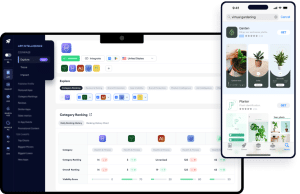A/B testing, also known as split testing, is a method used in marketing and product development to compare and analyze the performance of two or more variants (A and B) of a webpage, app, or marketing campaign. It involves splitting the audience or user base into different groups and exposing each group to a different variant. By measuring user behavior and comparing the results, A/B testing helps determine which variant performs better in terms of achieving specific goals or key performance indicators (KPIs).
Why does it matter?
A/B testing is a valuable tool for businesses seeking to optimize their marketing strategies, user experience, and conversion rates. It allows companies to make data-driven decisions by objectively evaluating the impact of changes or variations on user behavior and engagement. Here are a few reasons why A/B testing matters:
- Optimization and Conversion Rate Improvement: A/B testing helps identify which variant of a webpage, app design, or marketing campaign leads to higher conversion rates or desired user actions. By analyzing user behavior, click-through rates, engagement metrics, and conversion rates, businesses can make informed decisions to optimize their assets and increase their chances of achieving their goals.
- User Experience Enhancement: A/B testing enables businesses to improve the user experience by evaluating different design elements, layouts, navigation structures, or content variations. By testing different options, companies can identify the changes that resonate best with their users, leading to improved engagement, satisfaction, and retention.
- Validation of Hypotheses and Ideas: A/B testing allows businesses to validate hypotheses, ideas, or assumptions before implementing them on a larger scale. It helps mitigate risks associated with major changes by providing empirical evidence of their impact on user behavior or desired outcomes.
- Iterative Improvement: A/B testing promotes a culture of continuous improvement. By testing and measuring the performance of different variants, businesses can iterate and refine their strategies, designs, and campaigns over time. This iterative process leads to incremental enhancements and better results.
How is it used?
A/B testing involves several steps to effectively measure and compare the performance of different variants. Here’s a general outline of how A/B testing is typically used:
- Goal Definition: Clearly define the goal or KPI you want to improve or measure, such as conversion rate, click-through rate, time on page, or revenue.
- Variant Creation: Create two or more variants (A and B) that differ in specific elements or features. These variations can include changes in design, layout, content, call-to-action, pricing, or any other element relevant to the goal.
- Experiment Design: Randomly split your audience or user base into groups, ensuring each group is exposed to only one variant (A or B). This can be achieved through random assignment or using specialized A/B testing software.
- Data Collection: Collect data on user behavior and engagement for each variant. This can involve tracking metrics such as click-through rates, conversion rates, bounce rates, or any other relevant data points.
- Statistical Analysis: Analyze the collected data to determine the performance of each variant. Statistical methods are used to calculate confidence intervals, statistical significance, and identify the winning variant based on the predefined goal or KPI.
- Implementation and Iteration: Based on the results of the A/B test, implement the winning variant and iterate on further improvements. The insights gained from A/B testing can guide decision-making for future design choices, marketing campaigns, or product enhancements.
Example Calculation
A/B testing focuses more on qualitative and statistical analysis rather than specific formulas. The statistical analysis involves calculating metrics such as conversion rates, click-through rates, or other relevant KPIs for each variant. Statistical significance tests are then applied to determine if the observed differences in performance are statistically significant or occurred by chance.
For example, let’s consider an A/B test for a website’s call-to-action button. Variant A features a green button, while variant B features a blue button. The goal is to measure the click-through rate (CTR) and determine which color performs better. Here’s a simplified example of the results:
- Variant A (Green Button): 2,000 visitors, 120 clicks (CTR: 120/2,000 = 6%) • Variant B (Blue Button): 2,000 visitors, 150 clicks (CTR: 150/2,000 = 7.5%)
To determine if the observed difference in CTR is statistically significant, statistical tests such as chi-square test or t-test can be used. These tests assess whether the difference in CTR between the variants is likely due to actual performance variations or random chance.
Based on the statistical analysis, if the difference in CTR is found to be statistically significant (e.g., p-value < 0.05), variant B (blue button) would be considered the winning variant, indicating that it outperforms variant A (green button) in terms of click-through rate.
By conducting A/B tests and analyzing the results, businesses can make data-driven decisions to optimize their assets, improve user experience, and achieve their desired goals or KPIs.

